- Established 1982 -HOME: www.hiltonpond.org
THIS WEEK at HILTON POND Subscribe for free to our award-winning nature newsletter (Back to Preceding Week; on to Next Week) |
GRAY TREEFROGS, In late July 2018 the Hilton granddaughters (McKinley and Hadley) came to visit Hilton Pond Center for a few days. In addition to helping us band hummingbirds they explored the natural wonders of the property and one afternoon encountered a two-inch-long Gray Treefrog sleeping on the horizontal strut of an aluminum ladder we store on the back deck of our old farmhouse (see photo below).
All text, maps, charts & photos © Hilton Pond Center The girls were delighted to see the frog's half-opened eyes--note the translucent nictitating membrane--and that it slept with legs tucked under. This particular frog was about as pale as the species can get, providing near-perfect camouflage against the gray metal. (Not visible was distinctive bright orange coloration on the frog's inner thighs.) Identification of Gray Treefrogs comes with a peculiar problem: There are two species whose ranges overlap and that can be identified conclusively in the field only by call. Hyla chrysoscelis, Cope's Gray Treefrog, has a faster, less musical trill than H. versicolor, Eastern Gray Treefrog. (P.S. If you're into genetic microscopy and find a dead specimen, you can check to see the former species has diploid chromosomes, while the latter is tetraploid!) Cope's Gray Treefrog--the one we believe we have at Hilton Pond--also tends to have smoother, less warty skin.
All text, maps, charts & photos © Hilton Pond Center Primarily nocturnal, Gray Treefrogs occur regularly at the Center--a large individual monopolized one of our bluebird nest boxes this spring--although we seldom see them except on nights when they cling to our porch windows with "adhesive" toe pads (below left). From that vantage point the little amphibians feed on a cornucopia of insects attracted to incandescent lighting.
Incidentally, both Gray Treefrog species yield a skin secretion that irritates mucous membranes, so don't touch your lips, eyes, or nostrils after handling one. (And, on behalf of amphibians everywhere, you should always have wet hands when picking up any frog, toad, or salamander--lest you inadventently scrape off a mucous secretion that is important to the creature's health and well-being.) All text, maps, charts & photos © Hilton Pond Center THOUGHTS ON THE PASSING OF I was saddened to hear well after the fact that ornithologist-educator-author David W. Johnston passed away due to advanced prostate cancer. Dr. J was very influential in my professional life. I met Dr. Johnston when I attended Mountain Lake Biological Station in Virginia 'way back in Summer 1977 to take my first ornithology course. I had been teaching high school biology for several years and decided a more effective strategy for my beginning bio students would be for me to instruct from a natural history perspective. To that end, I laid out a plan to take field courses on everything from birds to insects and fungi to wildflowers.
All text, maps, charts & photos © Hilton Pond Center When I arrived at Mountain Like in June '77 and moved into Maphis Cabin with wife Susan and four-month old son Billy III, I little knew what to expect. At the first day-long class meeting (above, with Dr. J at lower left and me holding up the left pillar), the esteemed professor began with a joke and launched into a lecture about the history of ornithology and why it was the most important of all the natural science disciplines: “Birds are the best monitors of environmental health; they tell us more than we might ever expect to learn.”
All text, maps, charts & photos © Hilton Pond Center At the end of the day Dr. Johnston handed me a mist net and two poles and told me to deploy them the following dawn in a small wetland near my cabin, and to come running to his residence to waken him as soon as I caught a bird. In short order--with Susan's help--I snared a female American Restart and an eye-popping adult male Prothonotary Warbler (above) in full breeding plumage. Dr. J rose and came quickly, deftly extricated the warblers, and handed the prothonotary to me, asking: “What can you tell me about this bird.” And thus began a mutual exchange about taxonomy, coloration, migration, biogeography, bird longevity, banding, and myriad other concepts that continued for the duration of the month-long course. While teaching these topics, Dr. Johnston--already aware of my background as an educator--was fully supportive of my realization a live bird is one of the most marvelous teaching tools in all of science. In years since Dr. J occasionally corresponded with me, offering words of encouragement as I studied Blue Jays and worked toward an advanced degree in Ecology & Behavioral Biology at University of Minnesota. His support continued for nearly forty years after I returned home to South Carolina to continue my career as a high school and college biology teacher and then as a hummingbird researcher, photographer, and nature writer. (I was gratified Dr. J shared my keen interest in hummingbirds.) I was always pleased to see him at professional meetings and that he remembered me and that life-changing Protonotary Warbler--as well as a fascinating laboratory session (above left) in which he expertly demonstrated how to make a perfect study skin from a road-killed Cattle Egret. We were astounded at his expertise and thankful for his patience and guidance when we struggled through making study skins of our own. (He praised my first-try Eastern Screech-owl, although museum-quality it was not.) In short, Dr. David W. Johnston was a consummate ornithologist whose dry sense of humor made learning as fun as it was fulfilling. But he was also a gifted educator who understood the way you teach is just as important as what you teach. All text, maps, charts & photos © Hilton Pond Center
Adult male Ruby-throated Hummingbird (above) 6,000 RUBY-THROATS, To celebrate the banding of our 6,000th Ruby-throated Hummingbird during the past 35 years of research, Hilton Pond Center is undertaking a fund-raising effort in support of "Operation RubyThroat: The Hummingbird Project." Our goal in the Summer of 2018 is to raise ONE DOLLAR for each of the 6,064 hummers banded locally through July of this year. Checks also can be sent to Hilton Pond Center at: All contributions are tax-deductible on your Don't forget to scroll down for Nature Notes & Photos, |
|---|
|
"This Week at Hilton Pond" is written and photographed by Bill Hilton Jr., executive director of Hilton Pond Center for Piedmont Natural History
|
|
|
Please refer "This Week at Hilton Pond" to others by clicking on this button: |
Comments or questions about this week's installment? Send an E-mail to INFO. (Be sure to scroll down for a tally of birds banded/recaptured during the period, plus other nature notes.) |

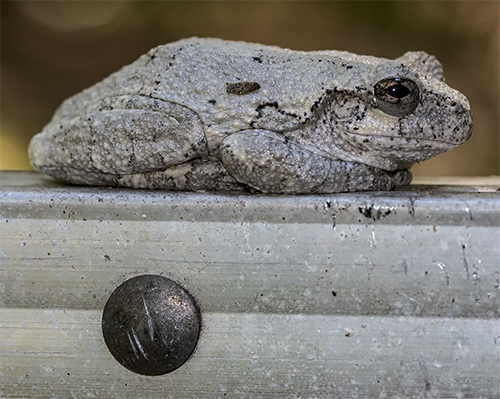
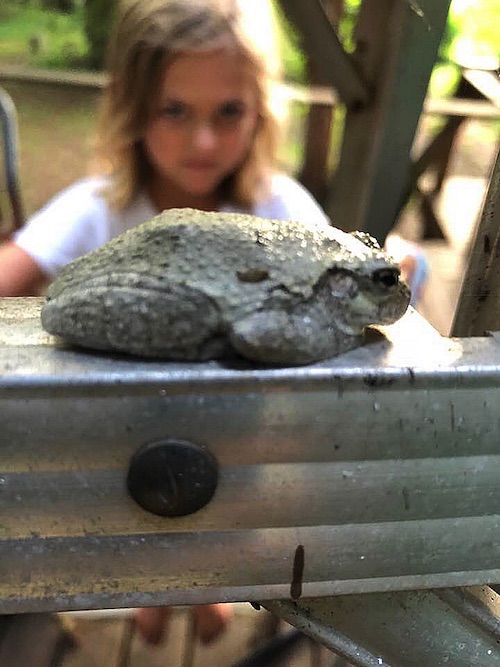
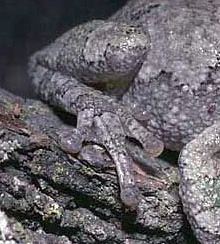 In winter Gray Treefrogs produce glycerol in their cells that allows them to freeze solid without bursting individual cells. When things warm up in spring, they thaw out and go about their business--heading by mid-summer toward a nearby pond or pool for mating activities. They should be calling most nights in late July around
In winter Gray Treefrogs produce glycerol in their cells that allows them to freeze solid without bursting individual cells. When things warm up in spring, they thaw out and go about their business--heading by mid-summer toward a nearby pond or pool for mating activities. They should be calling most nights in late July around 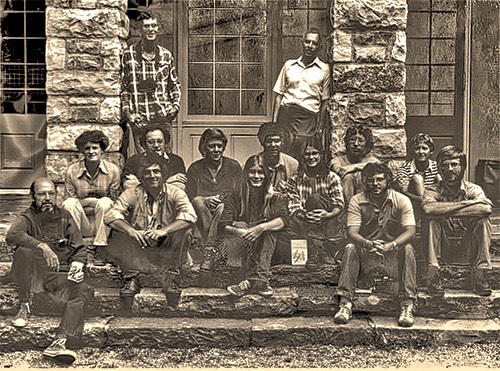

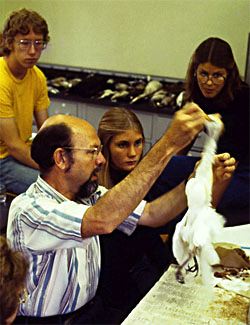 He laughed loudly but in full agreement when I announced “I think I can teach any subject from science to math to creative writing with a bird-in-the-hand.”
He laughed loudly but in full agreement when I announced “I think I can teach any subject from science to math to creative writing with a bird-in-the-hand.”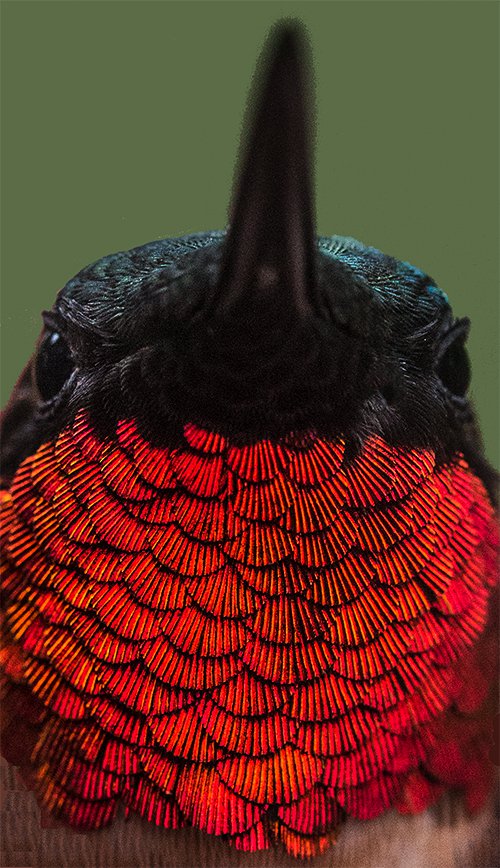




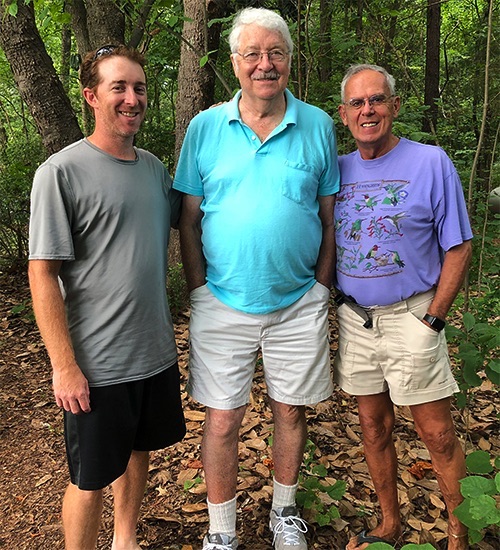





 Please report your
Please report your